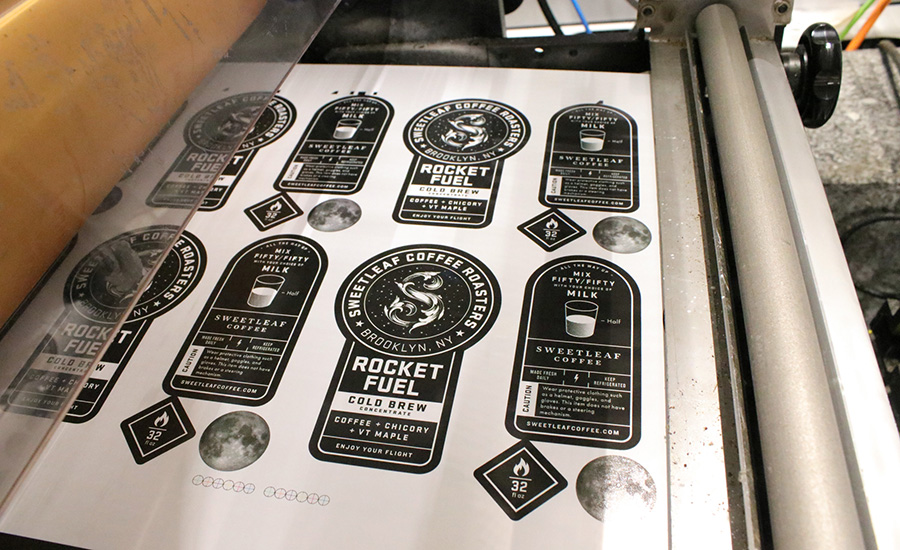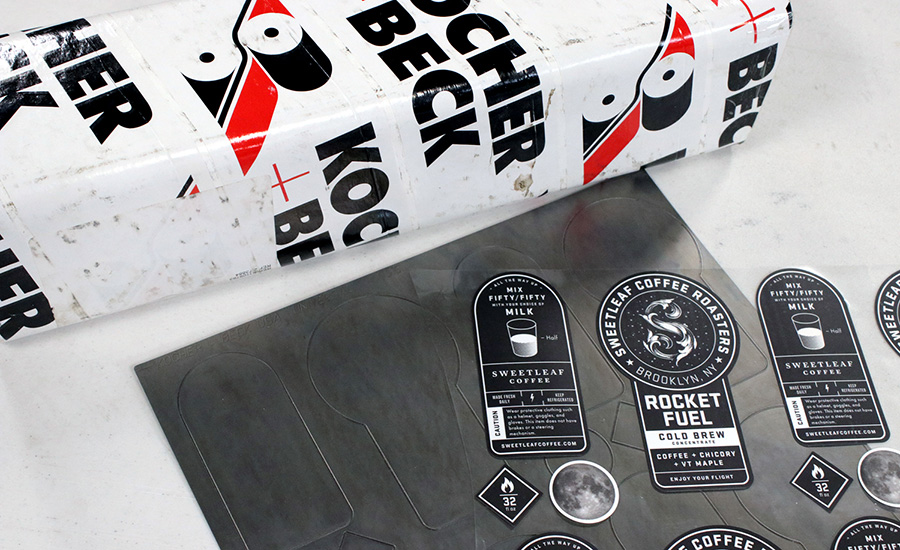Wash-Off Label Technology Meets the Challenge
With increased pressure to meet numerous sustainability mandates by companies and governments, wash-off label technology offers a way to optimize bottle recycling, deliver more rPET material for the supply chain and produce a clean-label look

Fortune 500 companies see the writing on the wall when it comes to consumers moving quickly toward sustainable products, or efforts by companies to reduce their carbon footprints. In a recent Flexible Packaging article about new polymer film material and equipment requirements, Simon Hermans, director of U.S. sales and marketing for Südpack, stated that millennials will drive demand for new sustainable packaging formats. And most Fortune 500 CEOs believe sustainability will be the deciding factor for many companies in the next decade.
So how does the industry increase rPET feedstock to the supply chain? One way is to increase the use of wash-off label adhesives for PET bottles, guarantee more PET bottles are recycled and offer more material for a circular economy.
Many interest groups and regulatory bodies are providing guidance and global regulations for more PET recycling. For example, the Association of Plastic Recyclers (APR) recommends labels should be made from materials with a density of less than 1.0 mil, float in water and be able to separate from a polyethylene terephthalate (PET) bottle.
UPM Raflatac, located in Mills River, N.C., offers a wash-off label adhesive called RW85C and a PET liner made from 90% post-consumer recycled (PCR) content. The SmartCircle wash-off technology works due to polypropylene labels floating while denser PET flakes sink, increasing the amount of new PET packaging materials.

Photo courtesy of Hub Labels
According to APR in third-party lab testing, the wash-off labeling technology exceeds the APR’s Critical Guidance testing requirements. “Exceeding the APR's standards for recyclable label products on PET packaging was very important for us when we developed these new film labels with the RW85C adhesive," says Tyler Matusevich, director of sustainability, Americas, at UPM Raflatac.
Sweetleaf Coffee Roasters, based in New York, recently shifted its focus due to COVID-19 and needed to expand its e-commerce channel for its Rocket Fuel cold brew coffee product. The coffee company moved away from traditional glass growlers and its reusability, and moved to PCR-based plastic bottles and the RW85C adhesive.
“With COVID, we moved away from wholesale, and online sales went through the roof,” says Nick Wagstaff, director of wholesale accounts at Sweetleaf. “There is no way to mail glass growlers, so we moved toward plastic bottles and needed to find a way to do it in a sustainable way.”
Sweetleaf enlisted Hub Labels of Hagerstown, Md., to convert the pressure-sensitive (p/s) label solution that has multiple layers, including a PET liner, the RW85 adhesive and a clear PS label composed of biaxially oriented polypropylene (BOPP) film at 2.4 mil. The adhesive is 0.5 mil thick and the PET liner measures 1.2 mil.
The label printing is done with a flexo-digital Heidelberg Gallus Labelfire press at 1,200 dots-per-inch (dpi) and an expanded color gamut from Heidelberg UV inkjet inks. The top layer is a protective lamination layer and is 1 mil BOPP matte lamination and a 0.5 mil of adhesive, according to Hub Labels.
Using a Kocher and Beck die machine, the labels are cut to create a unique shape, and the process strips away the matrix. The non-used matrix scrap is sent to Entsorga in Martinsburg, W.V., and is then converted into a clean-burning fuel called solid recovered fuel, SRF.

Image courtesy of Hub Labels
“Prior to our relationship with Hub Label and UPM Raflatac, we didn’t know a label adhesive could impact the package recyclability,” says Wagstaff. “We are excited about where we can take the new plastic version of our Rocket Fuel cold brew.”
Besides the sustainable attributes, the no-label look and ultra-clear label is very popular among consumers. “I felt they would be a perfect fit for their application and align with Sweetleaf’s goals to be a sustainable business,” says Matt Cassano, sustainable packaging consultant for Hub Labels.
REGULATION DRIVERS
Government regulation has also been a big factor in the adoption of no-label applications around the world. Recently, Lokales Wasser, a water beverage supplier, needed a sustainable solution to meet Zurich’s system for collecting returnable bottles from hotels and restaurants. Before the local rule, the product was still being sold in single-use bottles.

Photo courtesy of Avery Dennison
The local Zurich regulation directs a glass bottle to be rinsed and reused up to 30 times, so the company turned to Avery Dennison’s wash-off ultra-clear label. The labeling solution includes PP facestock label, PET liner and the company’s clear 7600 adhesive. In the bottle washing process, the two film layers expand at different rates in a hot washer, and the label curls for easy removal. Both the adhesive and the inks remain on the label, reducing contamination of the water in the bottle washer.
Moreover, the label maintains its integrity for hotel and restaurant use. “This material has very high clarity and the labels retain (their look) after lengthy immersion in water or chiller cabinets,” says Stefan Vollherbst, CPO at VollherbstDruck. “Adhesive, facestock performance and printability were great, and we were able to achieve a bottle design that looked as if it had used direct print.”
Another company meeting APR’s standard includes Fortis Solutions Group’s p/s labels that separate during the water bath stage and use a water-based adhesive. And CCL Industries Corp. has been refining its wash-off labels to meet the original 2017 Packaging Act in Germany, and its technology should be a good fit in the U.S. as more material recycling facilities update its plants modern control equipment — Materials Recovery for the Future (MRFF) consortium.
With so many low-carbon commitments by 2025, these companies are moving fast with new sustainability applications and the final result is a clean and sophisticated design that resonates with consumers, young and old.
Looking for a reprint of this article?
From high-res PDFs to custom plaques, order your copy today!








